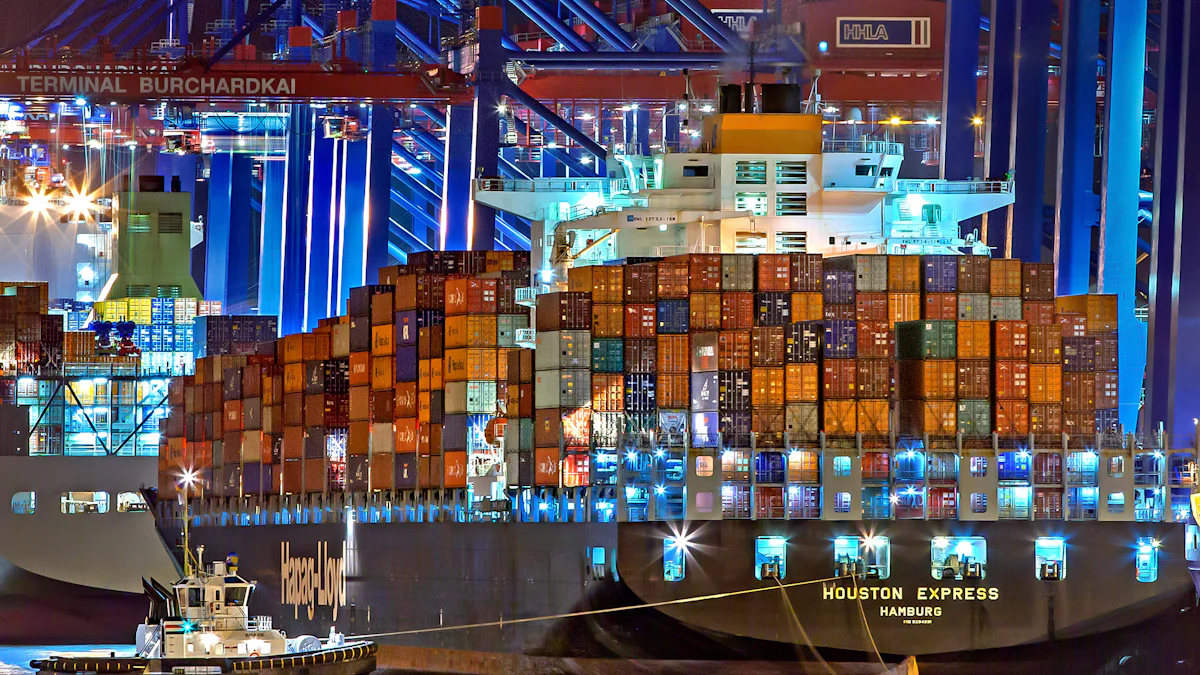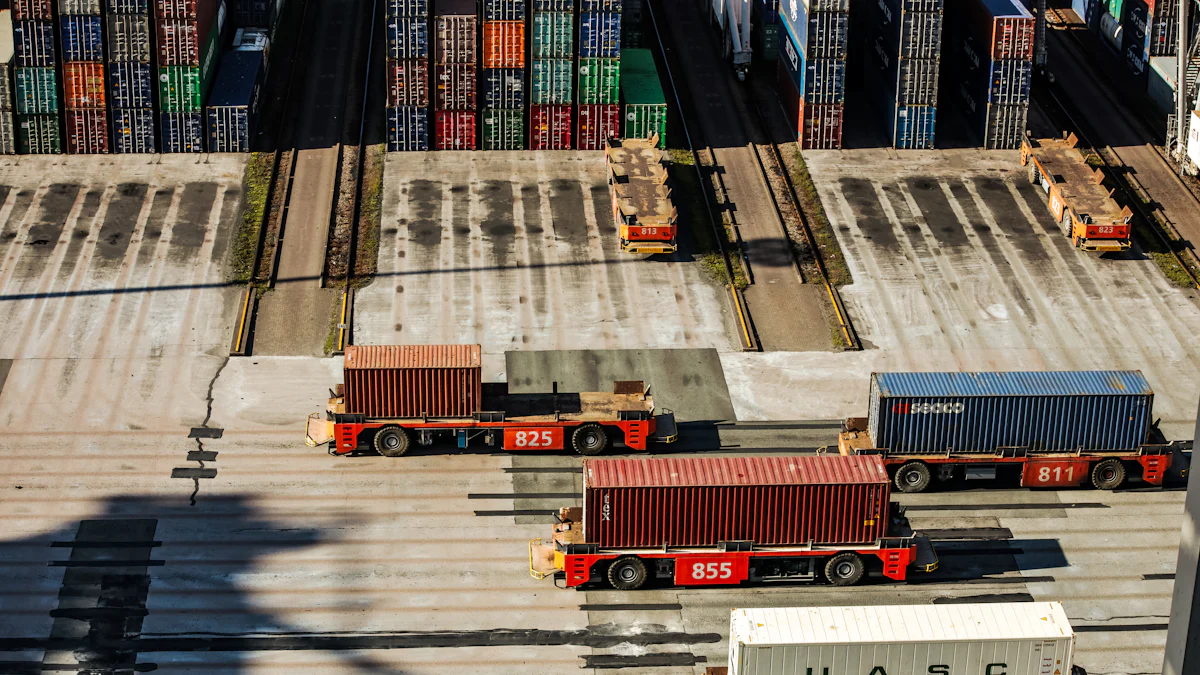Understanding Intermodal and Multimodal Transportation Differences

Intermodal and multimodal transportation both involve moving cargo using multiple modes of transport. Intermodal transportation uses separate contracts for each segment, while multimodal transportation operates under a single contract. Understanding the differences between these two methods is crucial. The choice between intermodal vs multimodal transportation impacts logistics efficiency and cost management. Intermodal transportation allows for better negotiation opportunities due to multiple carriers. Multimodal transportation simplifies management through a single point of contact. Both methods aim to optimize lead times and reduce environmental impact.
Intermodal vs Multimodal Transportation

Definitions and Basic Concepts
Intermodal Transportation
Intermodal transportation involves the movement of goods using multiple modes of transport, such as rail, road, and sea. Each segment of the journey uses a different carrier. This method requires separate contracts for each carrier involved. The flexibility of intermodal transportation allows shippers to negotiate terms with each carrier individually. This can lead to cost advantages and tailored solutions for specific logistics needs.
Multimodal Transportation
Multimodal transportation also uses multiple modes of transport. However, a single carrier manages the entire journey. This approach operates under one contract, simplifying logistics management. The single point of contact reduces administrative tasks and streamlines communication. Multimodal transportation often results in lower overall costs due to reduced coordination efforts.
Key Differences
Operational Differences
Intermodal transportation requires coordination among various carriers. Each leg of the journey involves a separate contract. This setup demands more logistics planning and management. Shippers must handle multiple points of contact and negotiate terms with each carrier. In contrast, multimodal transportation simplifies operations by using one carrier for the entire journey. A single contract covers all segments, reducing the complexity of logistics management.
Cost Implications
Intermodal transportation offers opportunities for cost savings through negotiation with multiple carriers. Shippers can choose the most cost-effective options for each leg of the journey. However, this method may incur higher administrative costs due to the need for multiple contracts. Multimodal transportation generally results in lower insurance costs and fewer transfers. The single contract reduces the risk of damage during transit and minimizes administrative expenses.
Advantages and Disadvantages
Intermodal Transportation
Advantages
Intermodal transportation offers several benefits. Shippers can achieve a pricing advantage by effectively using both rail and truckload. This method provides increased flexibility and improved service. The ability to negotiate with multiple carriers allows for tailored solutions. Intermodal transportation reduces costs by selecting the best unit load for each product. This approach enhances efficiency and minimizes expenses.
Pricing Advantage: Combining rail and truckload creates cost savings.
Flexibility: Shippers can choose options that suit specific needs.
Negotiation Opportunities: Multiple carriers offer better terms.
Cost Reduction: Efficient use of rail and truck lowers expenses.
Disadvantages
Intermodal transportation also presents challenges. Coordination among various carriers requires more logistics planning. Each segment involves separate contracts, increasing administrative tasks. The complexity of managing multiple points of contact can lead to delays. Shippers must handle different schedules and capacities, which may complicate operations.
Increased Complexity: Multiple contracts require extensive management.
Administrative Burden: Separate agreements add to paperwork.
Potential Delays: Coordination issues may affect timelines.
Operational Challenges: Managing different schedules can be difficult.
Multimodal Transportation
Advantages
Multimodal transportation simplifies logistics management. A single contract covers the entire journey, reducing administrative efforts. This method provides greater access to equipment and control over transit schedules. Multimodal transportation reduces overall delivery time by selecting the fastest mode for each step. Cost savings arise from efficient systems that handle delays without direct involvement.
Simplified Management: One contract streamlines operations.
Access and Control: Greater control over schedules and capacity.
Time Efficiency: Fastest modes reduce delivery time.
Cost Savings: Less direct involvement cuts expenses.
Disadvantages
Multimodal transportation has its drawbacks. The reliance on a single carrier may limit flexibility. Shippers have less negotiation power due to the unified contract. Any issues with the chosen carrier can impact the entire shipment. The lack of alternative options may lead to higher costs if the carrier's rates increase.
Limited Flexibility: Single carrier restricts options.
Reduced Negotiation Power: Unified contract limits bargaining.
Carrier Dependency: Issues with one carrier affect the whole journey.
Potential Cost Increases: Rates may rise without alternatives.
Practical Applications and Case Studies

Industry Examples
Intermodal in Practice
Intermodal transportation plays a significant role in global logistics. Many industries benefit from the flexibility and cost-effectiveness of this method. For example, the automotive industry often uses intermodal transportation to move parts and finished vehicles. Rail and truck combinations provide efficient long-distance transport. This approach reduces costs and improves delivery times. The food and beverage industry also relies on intermodal solutions. Perishable goods require timely delivery. Intermodal transportation ensures fresh products reach markets quickly.
Multimodal in Practice
Multimodal transportation offers streamlined operations for various sectors. The pharmaceutical industry benefits from the single-contract system. Sensitive shipments require careful handling. Multimodal transportation provides consistent oversight throughout the journey. Electronics manufacturers also use multimodal solutions. High-value goods need secure and efficient transport. A single carrier manages the entire process, ensuring safety and reliability. Multimodal transportation simplifies logistics for complex supply chains.
Case Studies
Successful Intermodal Implementation
Case Study: Automotive Logistics in Texas
The automotive sector in Texas showcases successful intermodal implementation. Companies use rail and truck combinations to optimize supply chains. This strategy reduces transportation costs by 20%. Delivery times improve by 15%, enhancing customer satisfaction. The integration of intermodal transportation supports sustainable practices. Reduced reliance on road transport lowers carbon emissions. This case study highlights the benefits of intermodal vs multimodal transportation in complex logistics environments.
Successful Multimodal Implementation
Case Study: Pharmaceutical Supply Chain Management
A leading pharmaceutical company implemented a multimodal transportation strategy. The single-contract approach simplified logistics management. Shipment accuracy improved by 25%, reducing errors and delays. The company achieved a 30% reduction in administrative costs. Enhanced control over transit schedules ensured timely deliveries. This case study demonstrates the effectiveness of multimodal transportation in managing sensitive and high-value goods. The streamlined process supports efficient and reliable supply chain operations.
Frequently Asked Questions
Common Queries
How to Choose Between Intermodal and Multimodal?
Choosing between intermodal vs multimodal transportation depends on specific logistics needs. Intermodal transportation offers flexibility. Shippers can negotiate with multiple carriers. This provides opportunities for cost reduction. Multiple points of contact allow for adjustments in delivery schedules. Intermodal transportation suits businesses that require tailored solutions.
Multimodal transportation simplifies logistics management. A single contract covers the entire journey. This reduces administrative tasks. The unified approach minimizes coordination efforts. Multimodal transportation benefits companies seeking streamlined operations. The method provides a timelier shipping resource. Shippers experience fewer delays due to integrated systems.
Key Considerations:
Flexibility: Intermodal transportation offers more options.
Management: Multimodal transportation simplifies processes.
Cost: Intermodal transportation allows for better negotiations.
Efficiency: Multimodal transportation provides faster delivery times.
What are the Environmental Impacts?
Intermodal vs multimodal transportation both aim to reduce environmental impact. Intermodal transportation often uses rail for long distances. Rail transport produces fewer emissions than road transport. This method contributes to lower carbon footprints. Intermodal transportation supports sustainable practices.
Multimodal transportation also focuses on efficiency. The single-contract system reduces unnecessary transfers. Fewer transfers mean less fuel consumption. Multimodal transportation optimizes routes. The method ensures minimal environmental disruption. Companies benefit from reduced carbon emissions.
Environmental Benefits:
Reduced Emissions: Intermodal transportation utilizes rail.
Fuel Efficiency: Multimodal transportation minimizes transfers.
Sustainability: Both methods support eco-friendly practices.
Carbon Footprint: Intermodal vs multimodal transportation lowers emissions.
Intermodal vs Multimodal Transportation presents distinct advantages and considerations. Intermodal transportation offers flexibility and cost savings through negotiation with multiple carriers. Multimodal transportation simplifies logistics management with a single contract. Evaluating specific logistics needs is crucial when choosing between Intermodal vs Multimodal Transportation. A reliable partner enhances the effectiveness of either method. Clear communication in multimodal movement increases efficiency. Intermodal vs Multimodal Transportation impacts supply chain capabilities. Both methods contribute to sustainable practices. Understanding the differences helps in making informed decisions about Intermodal vs Multimodal Transportation.
See Also
Ready to Explore: The Latest in Transport Tech for Supply Chains
Mastering Sustainable Transport in Supply Chains
Budget-Friendly Transportation Management Solutions
